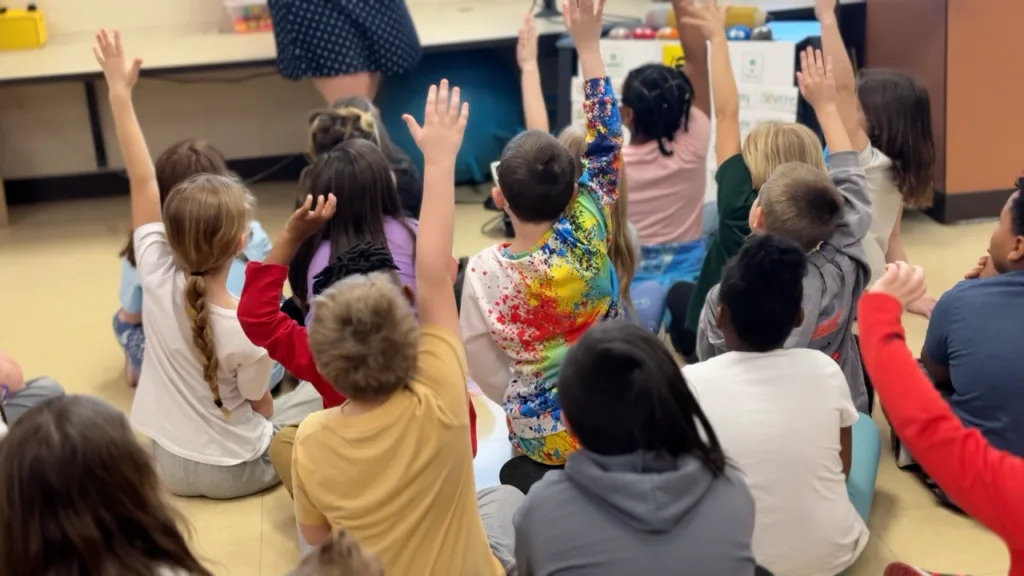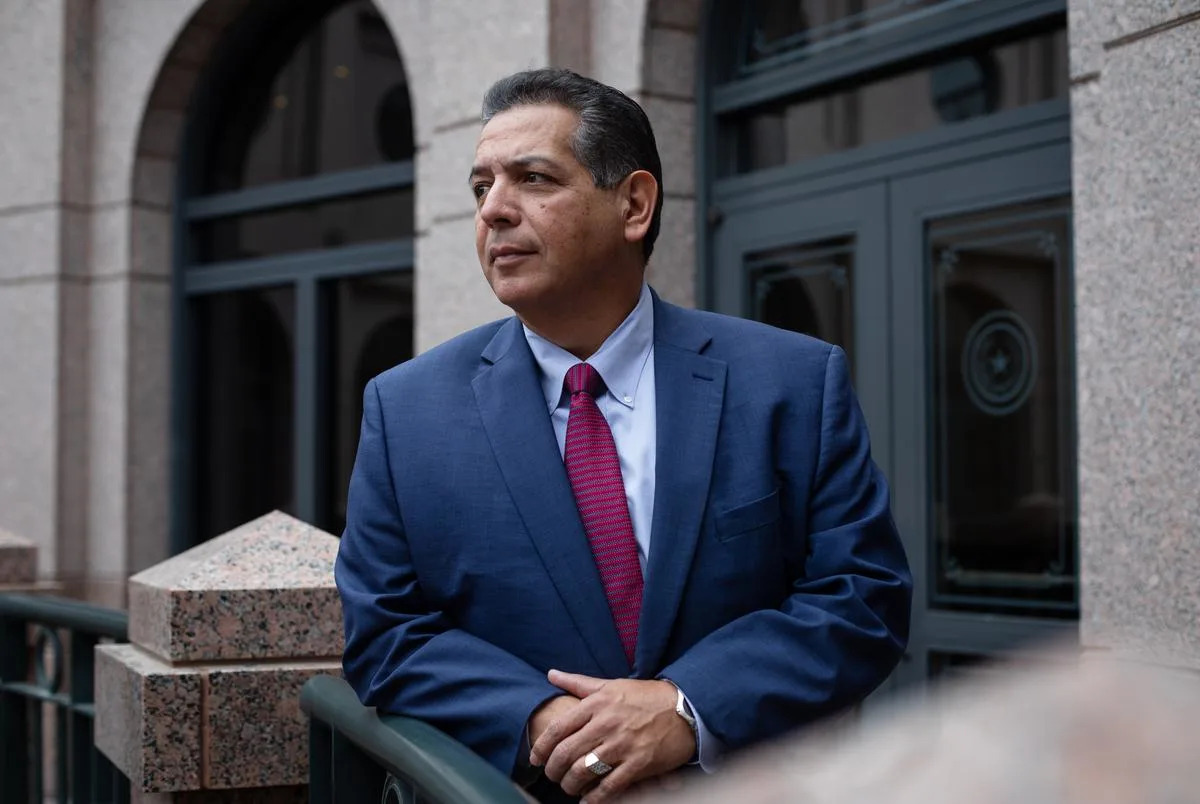
Ohio school children in a classroom. (Photo by Morgan Trau.)
Ben Colas recently founded Forest City Academy in Cleveland Heights, a microschool serving 15 students in kindergarten and first grade.
He wanted to open a school that gave families an alternative model to the traditional school system that was more affordable than a typical private school.
SUBSCRIBE: GET THE MORNING HEADLINES DELIVERED TO YOUR INBOX
“We really focus on letting the kids progress and advance when they are ready, having instruction tailored to what they need, instead of a more arbitrary every first grader learns this, every second grader learns this, and leaving space as well for kids to have choice and agency,” Colas said. Their first school year started this week.
Ohio has about 30 microschools — which are known for their smaller class size and individualized instruction, said National Microschooling Center CEO Don Soifer.
“We’re looking for kids that could be thriving more than they are in their present setting,” he said. “The beauty of microschools is you really can build a microschool and operate it around the specific needs of the particular kid that you’re serving, which is just not an opportunity that you have in larger traditional settings.”
Multi-age classrooms are the norm for microschools and the median number of students in a nonpublic microschool is 22, according to the 2025 National Microschooling Center report that surveyed 800 microschools across all 50 states.
Microschools grew in popularity during the COVID-19 pandemic and are typically driven by local demand, Soifer said.
There is not a federal definition of a microschool, meaning microschools can vary by state.
“The regulatory frameworks and statutory frameworks for schools in this country were designed without having anticipated microschooling becoming popular,” Soifer said.
Only a handful of states define microschools and Ohio is not one of those states, he said.
“State law does not include provisions for microschools; therefore, the Department does not oversee or track them,” Ohio Department of Education and Workforce Spokesperson Lacey Snoke said in an email.
What are microschools?
A little more than half of microschools operate under their state’s homeschool requirements and 30% operate as a nonpublic school within their state’s framework, according to the 2025 report.
Only 22% of microschools are accredited and students receive letter grades in 29% of microschools, according to the 2025 report.
Microschools predominately serve younger students and nearly three-fourths of microschools have tuition at or below $10,000, according to the report.
Microschools can be housed in various locations. A commercial business or nonprofit space was the most common location (39%), followed by places of worship (29%), according to the 2025 report.
Microschools get their curriculum from multiple places. When asked to check all that apply, 60% said they use curriculum from a company, 52% created their own curriculum, 51% use online learning tools, 50% use curriculum from other educators and 5% said they do not use curriculum, according to the report.
It is estimated that between 750,000 and 2.1 million students currently attend microschools, according to a 2024 report by the RAND Corporation.
“We do as well on the left, probably more so than on the right,” Soifer said. “We serve families of children with neurodiversities or other special needs.”
Forest City Academy
Forest City is inspired by Montessori education and does combined-age learning, Colas said. The plan is to add a grade level each year through fifth grade, according to their school’s website. They currently have two-full time faculty members and two part-time faculty members and are leasing classrooms from a local church.
Forest City’s tuition is $12,000 and families can use Ohio’s school vouchers to help pay for tuition.
“I’m super committed to ensuring that we’re an accessible school,” Colas said. “I think half of our families aren’t going to pay out of pocket. So the accessibility from the vouchers made it go from seeing cool concepts out there to we could do something like that here.”
Ohio lawmakers expanded the Education Choice-Expansion eligibility to 450% of the poverty line through the 2023 state budget — creating near-universal school vouchers. K-8 students can receive a $6,166 scholarship and high schoolers can receive a $8,408 scholarship in state funding under the expansion.
Microschools, he said, can help students recognize and develop their passions and interests.
“There’s not a one-size-fits-all solution for every child,” Colas said.
He has worked in education since 2013.
“Being in the traditional setting, I was very disheartened that for many kids, the only choices they got to make in a typical day were what they did at recess and possibly who they met with at lunch,” Colas said. “Otherwise you were told what to learn, how to learn, where to go — there was just not any choice available for them.”
Azalea Montessori School
Azalea Montessori School near Cincinnati has a preschool and a kindergarten program that serves 54 children ages three, four and five, said Jeana Olszewski, the school’s founding teacher leader.
“We focus on independence and individualized education,” she said. “It’s not like everybody’s learning all of these things at the same time. … We do small group lessons, we do individual lessons, and then big group lessons.”
Azalea Montessori, which accepts private school vouchers, opened in 2019 with 15 students. It is located in an old school building connected to a church and has an outdoor program that involves going to a nearby park.
Preschool tuition is $9,000 and kindergarten tuition is $11,000, but Olszewski said kindergarten tuition is normally around $5,000 with a voucher.
“If you don’t get the full EdChoice dollars, we would cap your tuition at $9,000, so no family is ever going to pay more than $9,000,” she said.
Follow Capital Journal Reporter Megan Henry on Bluesky.








Comments